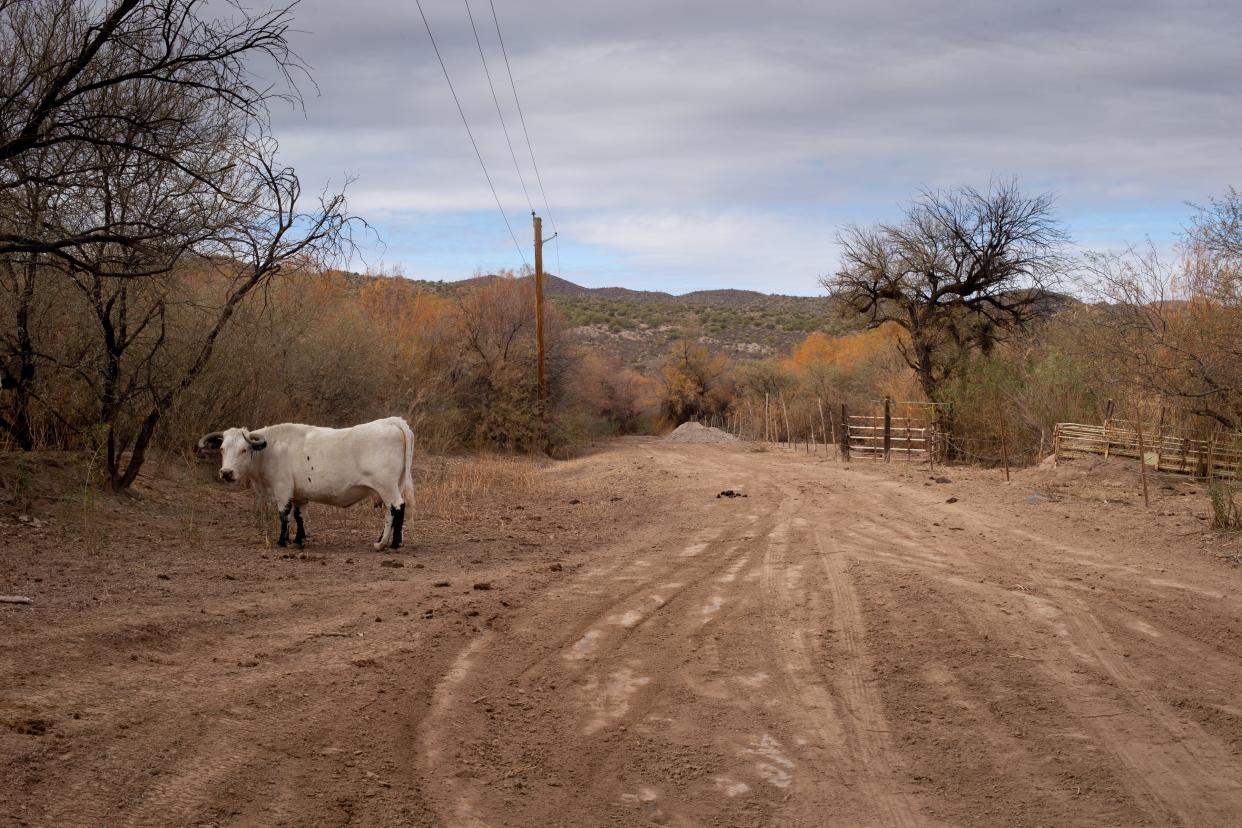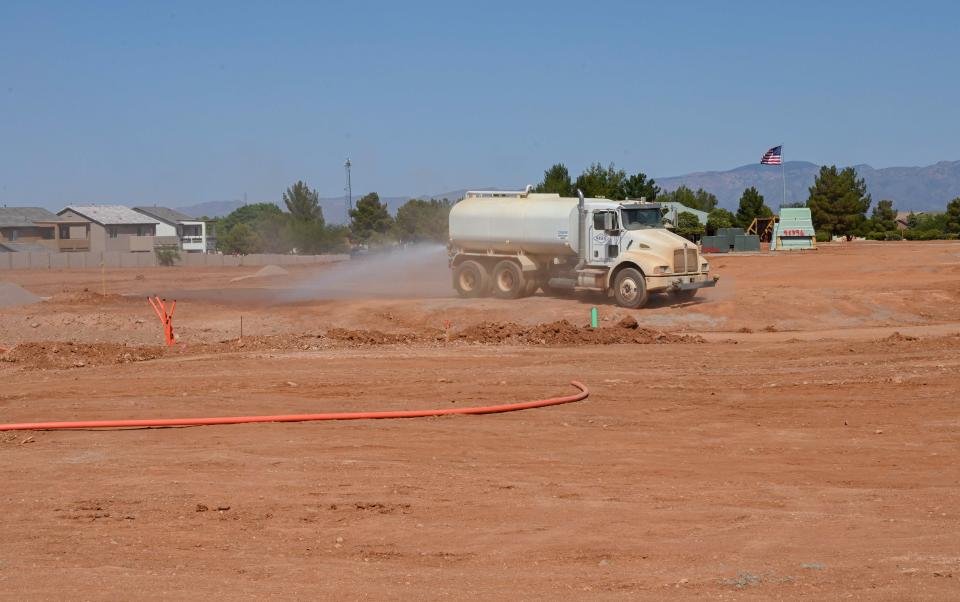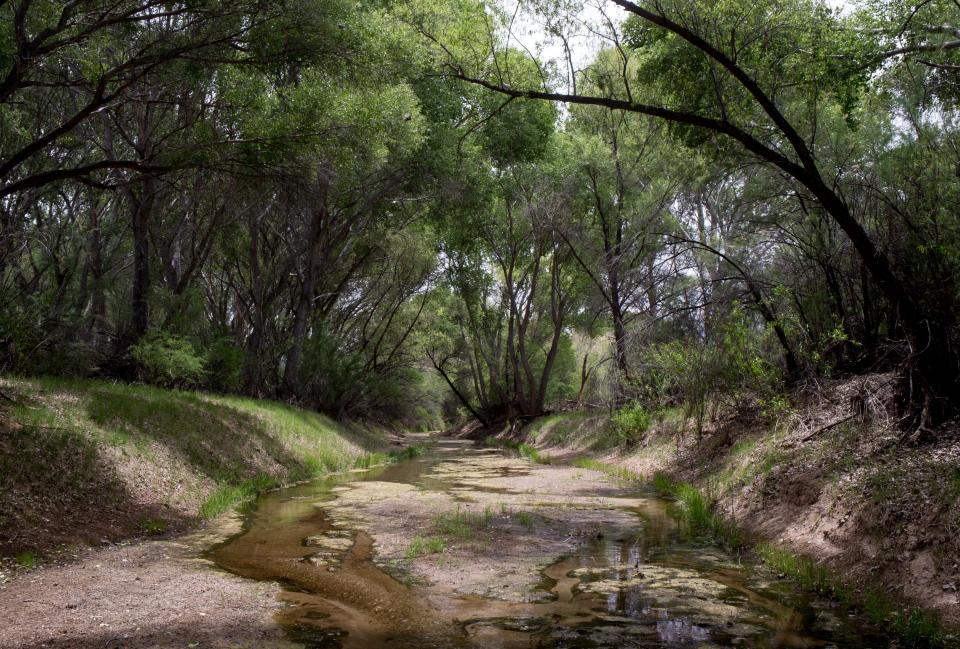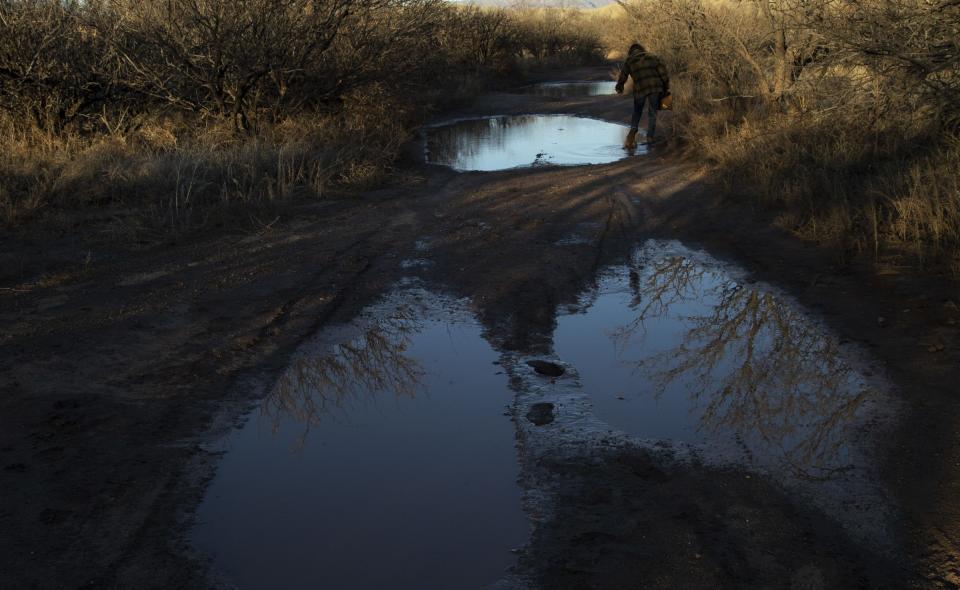BLM plan to renew grazing allotments near the San Pedro River imperils habitat, groups say

The Bureau of Land Management has completed an environmental assessment and will renew livestock grazing on four allotments partially located in the San Pedro River National Conservation Area in southern Arizona.
The agency announced its plans earlier this month and said the allotments will come with new terms and conditions, which include an adaptive management strategy to improve rangeland. That will include a 50% reduction of livestock on the four allotments, limits that will remain in place until desired resource objectives are achieved.
BLM spokesperson David Hawes says the bureau conducted thorough land health evaluations on the four existing grazing allotments located within the conservation area. Information from the land health evaluations was incorporated into an environmental assessment, which evaluated grazing in the area.
But environmental groups have long questioned the ethics of allowing cows on public and protected land known for the rich biodiversity found in the San Pedro region. The area along the river is home to more than 400 bird species, 50 species of reptiles and amphibians and 80 species of mammals.
The groups are also concerned about failed land health assessments on the four allotments.
Earlier this year, the Center for Biological Diversity, the Western Watersheds project and the Sierra Club filed a suit to challenge the BLM’s proposal to expand livestock grazing in the conservation area. A settlement was reached with the BLM to review the impacts of livestock grazing.
The agreement filed in a Tucson federal court required the BLM to reconsider its plan to expand grazing leases in the conservation area. It ordered the BLM to determine if grazing is compatible with the goals of protecting riparian and wildlife values, which the BLM oversees.
The BLM says it will address existing and continuing managed grazing within conservation area. The grazing occurs only on the Babocomari, Brunckow Hill, Three Brothers, and Lucky Hills allotments, through the agency's allotment lease planning process.
Based on the December decision, the leases to the four allotments will allow for 180 cows to continue to graze on public lands where they have for decades.
The BLM’s review concluded that the decision would not significantly affect the quality of the human environment. The bureau also says the environmental impacts do not exceed effects described in the final environmental impact statement for the conservation area.
But conservation groups believe the BLM is overlooking data that suggest cattle grazing in riparian areas has led to E. coli contamination, soil erosion, and flooding in the federally protected area. Western Watersheds said it intends to submit a formal protest of the decision.

“Livestock grazing is one of the biggest impacts to the area, both before it was designated as SPRNCA and after,” said Cyndi Tuell, Arizona, and New Mexico director for Western Watersheds. “And since that time, we have less water, higher temperatures, ongoing drought, more listed endangered species and their habitat and the BLM thinks they can keep doing business as usual.”
River is already contaminated in some areas
The San Pedro River begins in Mexico and flows north toward Tucson. Cottonwood and willow forests shade the lush grasses that stem along the banks of the river. Western barking frogs leap on lily pads and feline predators like mountain lions roam along the stretches of the river that expand into marshlands, grasslands and mesquite bosque.
The 55,000-acre San Pedro National Conservation Area was created by Congress in 1988 to conserve, protect and enhance the riparian area and the improve aquatic and wildlife habitat along a 40-mile stretch of the river, a popular destination for outdoor recreation.
The Arizona Department of Environmental Quality’s latest assessment report shows that portions of the San Pedro are contaminated with E. coli. The water quality report in the study area of the conservation area lists the reach of the San Pedro between Babocomari River and Dragoon Wash, as well as the reach between the U.S-Mexico border and Charleston Road, as impaired due to E. coli exceedance.
The report also shows that E. coli levels in the San Pedro River were highest during and directly after monsoon season.
In the final environmental impact statement for the grazing plan released in 2019, the BLM acknowledged the role cattle grazing plays in E. coli contamination. The report said livestock grazing “could introduce additional pollutants in the river and contribute to E. coli exceedance.”

“They have E. coli contamination that they know is from the Babocomari allotment, so I don’t understand how they’re justifying their decision,” said Tuell. “They acknowledge that the area is not meeting land health standards.”
All four allotments failed to meet at least one land health standard in the most recent assessment conducted by the BLM. Livestock grazing was determined to be the cause of failure on the Babocomari allotment, but the bureau says the other three allotments failed due to multiple other factors.
"Livestock grazing was only determined to cause non-achievement of one land health standard on one allotment. As such, the BLM determined that grazing is still an appropriate land use when managed to achieve desired resource objectives," said Hawes “While all four allotments failed to meet one land health standard, this was caused by factors other than current livestock grazing, such as climate and drought, on the other allotments."
BLM says fencing will help protect habitat
Mammals, birds, and other animals that rely on the impaired San Pedro and Babocomari for hydration and as a food source will also be exposed to the high concentrations of E. coli, increasing their likelihood for sickness and premature death. Environmental groups find this especially concerning since the conservation area is home to threatened species like the Yellow-billed cuckoo and gray hawk.
In 2018, a group of 21 scientists sent a letter to the bureau, urging the agency to exclude livestock grazing, noting that if livestock grazing in the conservation area was reauthorized, the many aquatic and riparian species and ecosystem functions would be jeopardized and the critically important role of the stretch as an ecological reference site would be lost.
Livestock grazing has damaged approximately 80% of stream and riparian ecosystems throughout the western United States, according to a study led by the High Sierra Hikers Association. Although these areas make up only 0.5-1.0% of the overall landscape, a disproportionately large percentage of all desert shrub and grassland plants and animals depend on them.
Livestock seek out water, succulent forage, and shade in riparian areas, leading to trampling and overgrazing of stream banks, soil erosion, loss of stream bank stability, declining water quality and drier conditions, researchers have found. Reduced habitat for riparian plant species, cold-water fish and wildlife has caused native species throughout the West to decline in number or go locally extinct.
To minimize the impacts caused by cattle grazing, fencing is required and already exists along the four allotments to keep cows out of the river and protect riparian vegetation along the banks of the San Pedro and Babocomari.
“The proposed fence construction separating the Babocomari River from the rest of the Babocomari allotment should help mitigate this issue,” said Hawes. “Additionally, the BLM will continue to monitor water quality during the season of use. Under the adaptive management framework, the BLM would also reduce the number of livestock on the allotment until either the standards are met, or no livestock remain.”
The BLM plans to install about 15 miles of fencing on the conservation area boundary within the four allotments and to create a riparian pasture on the Babocomari allotment. This pasture will allow the Babocomari River to be managed separately from the rest of the allotment.
In recent years washouts from flooding during monsoon season have created gaps in the fences, according to Western Watersheds, allowing the cows to enter the rivers and trample and graze on important riparian vegetation.
Tuell believes the fencing has failed in the past to keep cows out and that its presence is damaging the natural landscape of the federally protected land.

“The problem with that is the Babocomari and San Pedro are eligible to be outstandingly remarkable waters and wild and scenic rivers. That fencing is going to degrade those values,” said Tuell. “So according to their mandate to conserve, enhance, and protect the riparian values they can’t do that, they can’t do that with fencing. What they need to do is move the cows out.”
Plants 'don't stand a chance against the cows'
The Center of Biological Diversity sued the BLM in October 2021 for trespass grazing’s destruction of endangered plants in the conservation area, such as the imperiled Huachuca water umbel. Livestock trespassing puts these species at greater risk of extinction according to the center.
“Nearly all the core population of these highly endangered, delicate plants have been annihilated. They don’t stand a chance against the cows,” said Robin Silver, a cofounder of the center in a statement from that lawsuit. “We’ve been fighting for decades to save the San Pedro and its plants and animals. The BLM is either too timid or too apathetic to protect this fragile ecosystem from neighboring ranchers, whose cows are ravaging the river and pushing the water umbel closer to extinction.”
Trespass grazing can destroy riparian vegetation that would act as a natural buffer between natural minerals, pollutants and manure from entering the river. But when cows trample and graze on riparian vegetation the chance for E. coli entering the water is increased and channel stability is decreased creating an increased risk for flooding.
The BLM says it will continue to monitor vegetation on the allotments annually and will monitor water quality during the season of use.
The public has 15 days from the date of the Dec. 21 written notice of the decision from the bureau to submit a formal protest of the decision. After those protests are resolved, there will be a 30-day appeal period before the decision becomes final.
Jake Frederico covers environment issues for The Arizona Republic and azcentral. Send tips or questions to jake.frederico@arizonarepublic.com.
Environmental coverage on azcentral.com and in The Arizona Republic is supported by a grant from the Nina Mason Pulliam Charitable Trust. Follow The Republic environmental reporting team at environment.azcentral.com and @azcenvironment on Facebook, Twitter and Instagram.
Support environmental journalism in Arizona. Subscribe to azcentral today.
This article originally appeared on Arizona Republic: Grazing allotments on the San Pedro threaten fragile habitat

